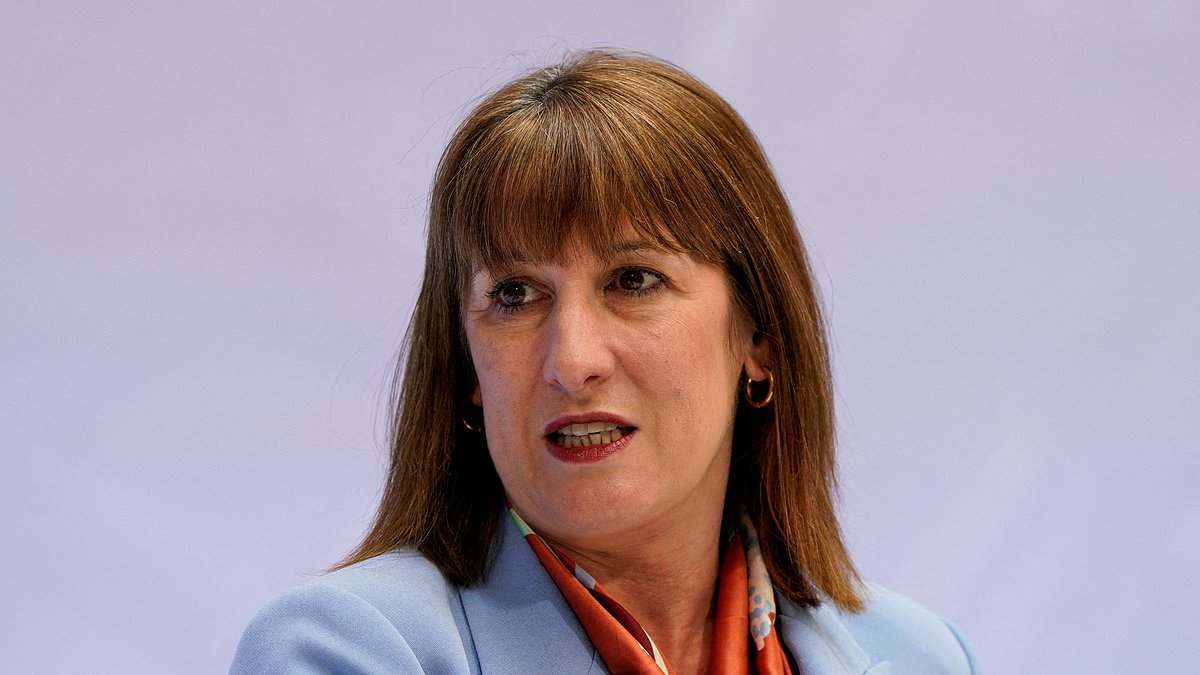By Alex Brummer,Editor
Copyright dailymail

As she battles domestic and global economic tides, Rachel Reeves’s most effective line of defence is that of her self-made image of the Iron Chancellor.
Whatever budgetary challenge she is confronted with, her tough fiscal rules, most notably the pledge that current spending must be met from taxation, will not be breached.
In the run-up to her second Budget on November 26, Reeves’s determination will be tested to distraction. It is not made any easier by Labour’s manifesto promises to shield the nation from increases in National Insurance (on working people), VAT and income taxes.
An undertaking which showed signs of fraying in the corridors of the Labour party conference in Liverpool last week.
The Chancellor is also not being helped by the empowered Office for Budget Responsibility (OBR). The watchdog has chosen this moment to update its methods of forecasting UK growth. At the core of its new calculations is Britain’s rate of productivity.
This has caused consternation in the Treasury as it makes balancing the books on current spending that much harder. The OBR’s first draft suggests an additional shortfall of as much as £18 billion, erasing the Chancellor’s headroom of £9.9 billion and potentially leading to a budget black hole of as much as £30 billion.
For as long as I can remember, successive Chancellors have unveiled grandiloquent plans designed to show how prudent they are with taxpayer money.
Almost every Budget speech to MPs and the public, since TV cameras were invited into the Commons in 1989, has been a great act of trickery.
Taxes are put up and occasionally cut. A visit to the pub is encouraged by a couple of pence off the price of a pint. And the Chancellor rattles off a long list of incomprehensible numbers about borrowing and the national debt.
The data, contrived somewhere deep in the bowels of the Treasury, is designed to show our governments as responsible guardians of the public purse. It is a mirage.
Even if public spending and borrowing are rising, accompanying charts, published in the Budget’s Red Book, supposedly show debt levels trending downwards. But how then is the national debt standing perilously close to 100 per cent of economic output?
The answer is that the accumulation of borrowing by successive governments has been obscured by a magical act of showing debt falling as a percentage of gross domestic product (GDP) through use of optimistic growth forecasts.
The faster the economy grows, the smaller debt is as a proportion of national income, and the better the budgetary outcomes look.
But the OBR has recently admitted this is all a work of fiction.
‘The UK cannot afford the array of promises it has made to the public,’ its chairman Richard Hughes declared. The OBR’s most recent fiscal risks report bluntly points out the nation has been living a lie.
While eight of the last ten fiscal frameworks, issued by successive Chancellors since 2010, show public debt falling, the bitter truth is public debt has in fact risen by 24 per cent in the past 15 years and 60 per cent in the past two decades.
Excuses are always made. Meeting the costs of shocks such as the pandemic and war in Ukraine bears some responsibility. But as soon as something goes wrong, the call goes out for the state to step in and offer a safety net.
Ever more people have been added to the welfare rolls since the pandemic and have never left, and the cost to the state has rocketed. Efforts to cut borrowing and pay debt have also been defeated.
Earlier this year, planned spending cuts to welfare were reversed after coming under siege from unnerved Labour backbenchers.
As a result, rising taxes have become an inevitability and are heading towards 38 per cent of national output – their highest level in peacetime. This is despite Reeves already raising them by £40 billion in her Budget last year.
This spending incontinence of successive governments, with the current Labour administration no different, is a sharp reminder to me of the most shocking episode in modern British economic history.
In 1976, the Labour government of Jim Callaghan found itself in a catastrophic position because of surging global oil prices, ridiculous wage demands, runaway inflation, a tumbling pound and an inability to pay the interest on the national debt.
The then-Chancellor Denis Healey had no choice but to go cap-in-hand to the International Monetary Fund. In exchange for a bailout of £3 billion (a whopping £16.5 billion in 2025 money) the Callaghan government was forced to make swingeing spending cuts.
My greatest fear is that if the Government does not level with the public and be honest about borrowing and debts, we could experience the same trouble again.
Britain’s challenge is daunting. The UK is still adding the equivalent of 3 per cent of output a year to the national debt, which now stands at a daunting £2.8 trillion. Liabilities continue to pile up. Meeting the Nato target of spending 5 per cent of national income on defence is unfunded and the signal from debt markets is they are turning from amber to red.
But instead of backing business to spur growth, Keir Starmer’s government prefers to crush wealth creation, smother aspiration and clobber the incomes of working people as if it were the only choice.
It isn’t, and Labour would be prudent to realise that, and fast.